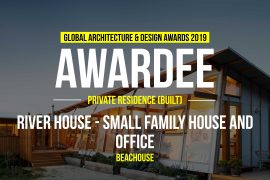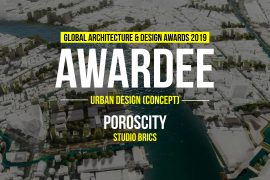“Cities, like dreams, are made of desires and fears, even if the thread of their discourse is secret, their rules are absurd, their perspectives deceitful, and everything conceals something else.”
Once a complex of substantial volcanic cones, now an eccentric scoria quarry pit hemmed in between low-rise suburbs of Auckland, New Zealand, the Three Kings Quarry is now on the verge of becoming a site for a mass housing redevelopment. The site used to be the ‘Auckland most complex volcano’ which had five mighty scoria cones; and once ‘Auckland largest scoria extraction’ which was quarried over a century. The current redevelopment plan to backfill the quarried land and construct rows of homogenous houses refuses to recognize the significance of Auckland’s articulated volcanic landscapes. The proposal to flatten the inverted volcano is an act of normalizing extremities and effacing traces, belligerently denying the extraordinary history and geology of the city.
Participant Name: Zee Shake Lee
Country: New Zealand
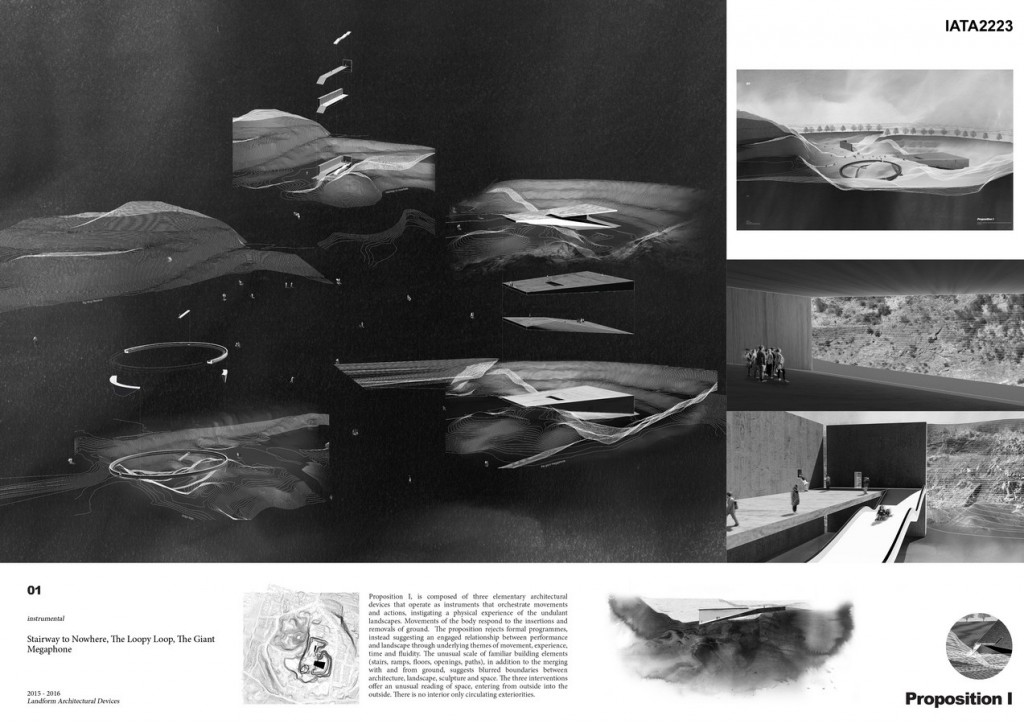
Auckland, described as ‘a city nurtured in a nest of volcanoes’, is characterized by a natural turbulence in which Aucklanders live, work and play. The volcanoes in Auckland, which once established their significance as points of reference and assemblage, from Maori fortresses to water resources, signal stations for ships, surveying points and forts, now survive as park lands or as remnants of economic contributors supplying materials for roads and buildings. The disappearing volcanoes and their residue, implicated by industrialization of the environment, have generated a unique urban condition that suggests a rethinking of occupation in extreme landscape as well as a questioning of our social, environmental, and political relationships with natural and manufactured landscapes.
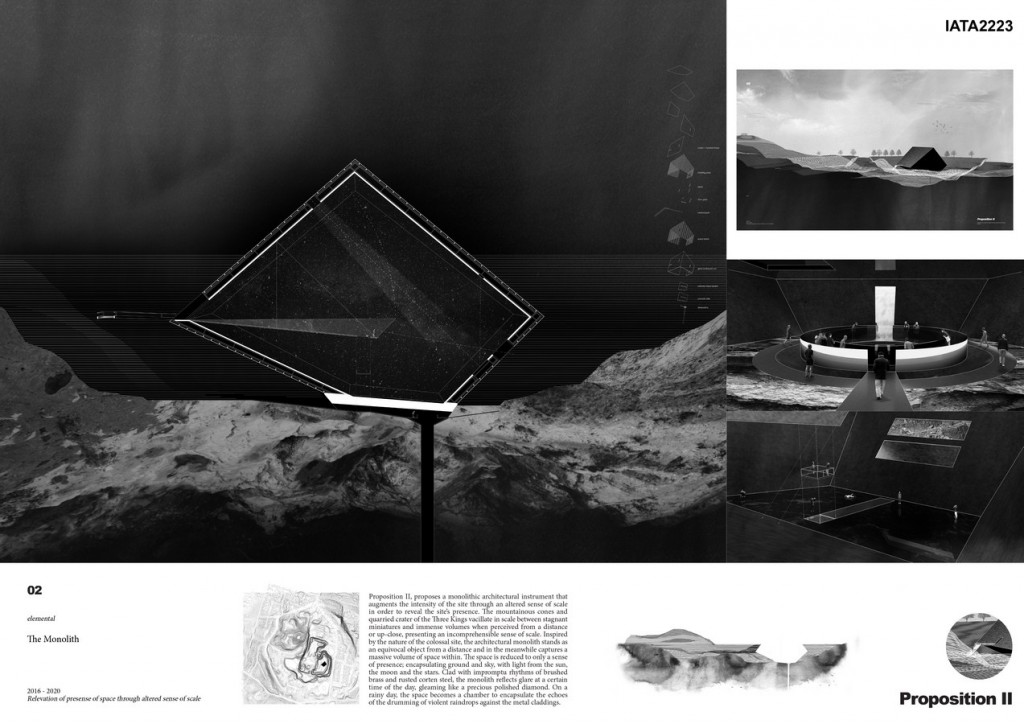
The perpetual transformations of the site through natural turbulence and artificial disturbance reveals a manifestation of transience and the fluctuations and becomings in our landscape as well as the built environment: the volcanic field of Three Kings presents itself as multiple states of moving grounds. Contradictorily, the image of stability and permanence of architecture has led to the refusal to recognize transience in space and everyday life. This thesis asks: How does architecture mediate the instability of grounds and transience in living? Can architecture be the agency to confront and engage the urban conflicts of decontexualization and generalization of post-industrial altered landscapes? The future of architecture relies on the questionings of how we can live, what to build, where to build, and how we build, in an environment of flux. Bernard Tschumi claimed, “architecture [is] not necessarily [about] providing an answer but rather about raising questions.”
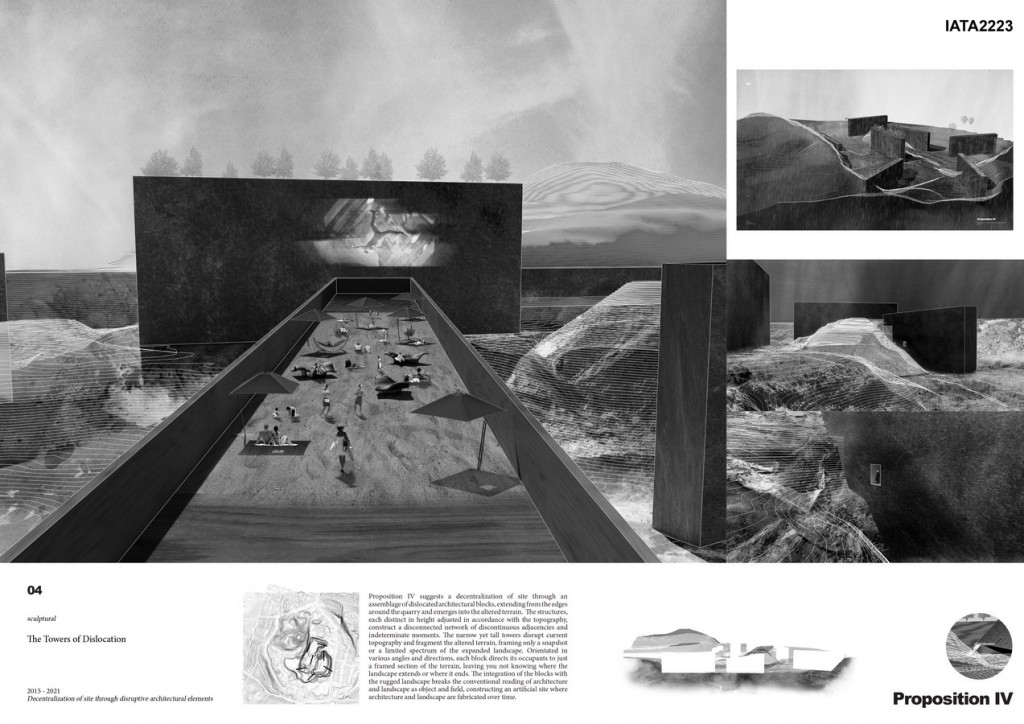
The Three Kings quarry, through its transformations over time, reveals urban conflicts of unbridled manipulations of natural heritage, exploited landform shaped by privatization of the public realm, emphasis of monetary development over cultural practice, generalization of unique spatial conditions, homogenization of urban form, and decontextualization of place.
To irrupt, is to rush in forcibly or violently. Before Three Kings Volcanoes, or Three Kings quarry, become one of Auckland’s many generic suburbs, can the proposed architectural propositions suggest a rethinking of what is our relationships with the landscape and ground, which are no longer stable?
In
Urban Design
Moving Grounds Irrupting Three Kings' Inverted Volcanoes | Zee Shake Lee
3 Mins Read




